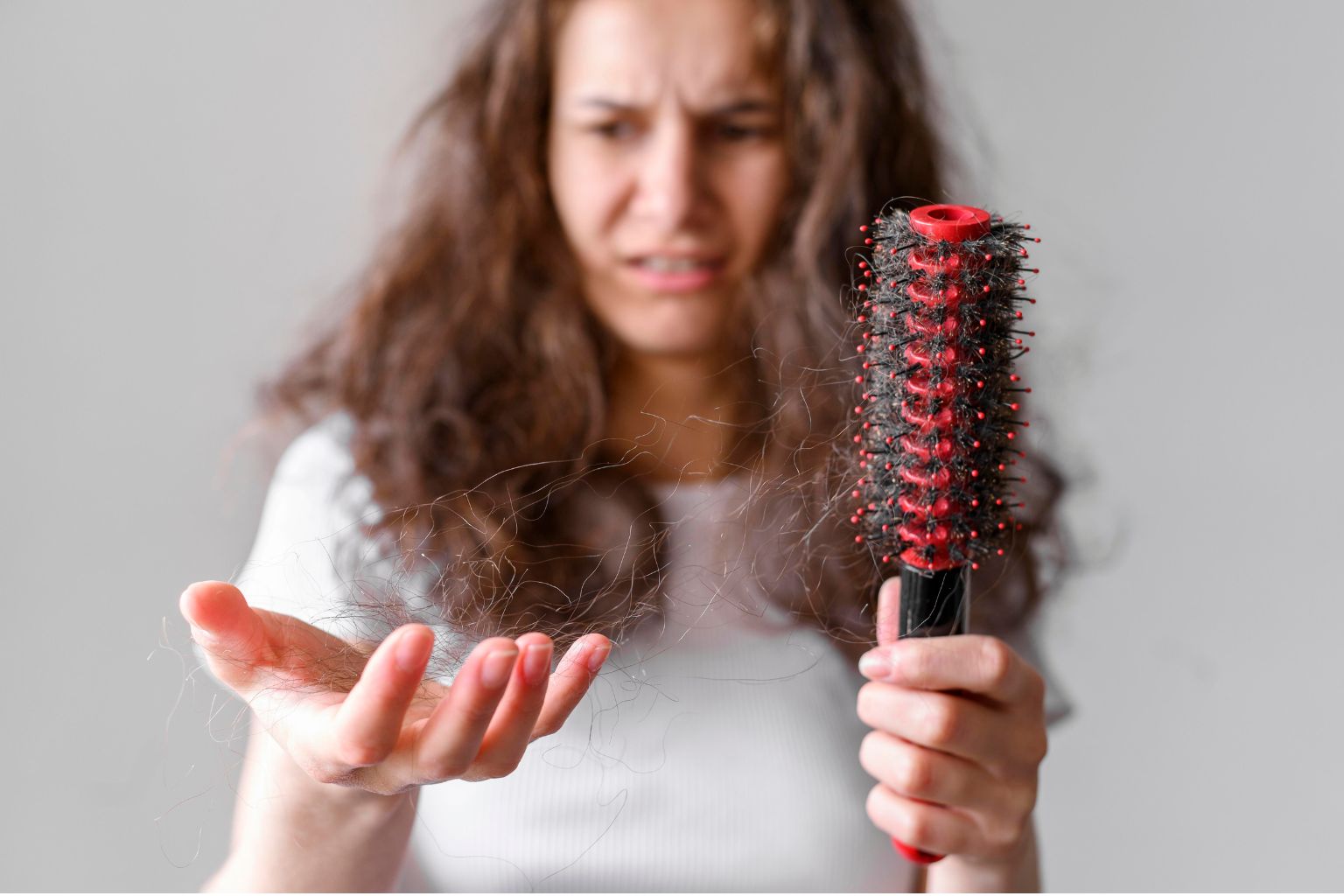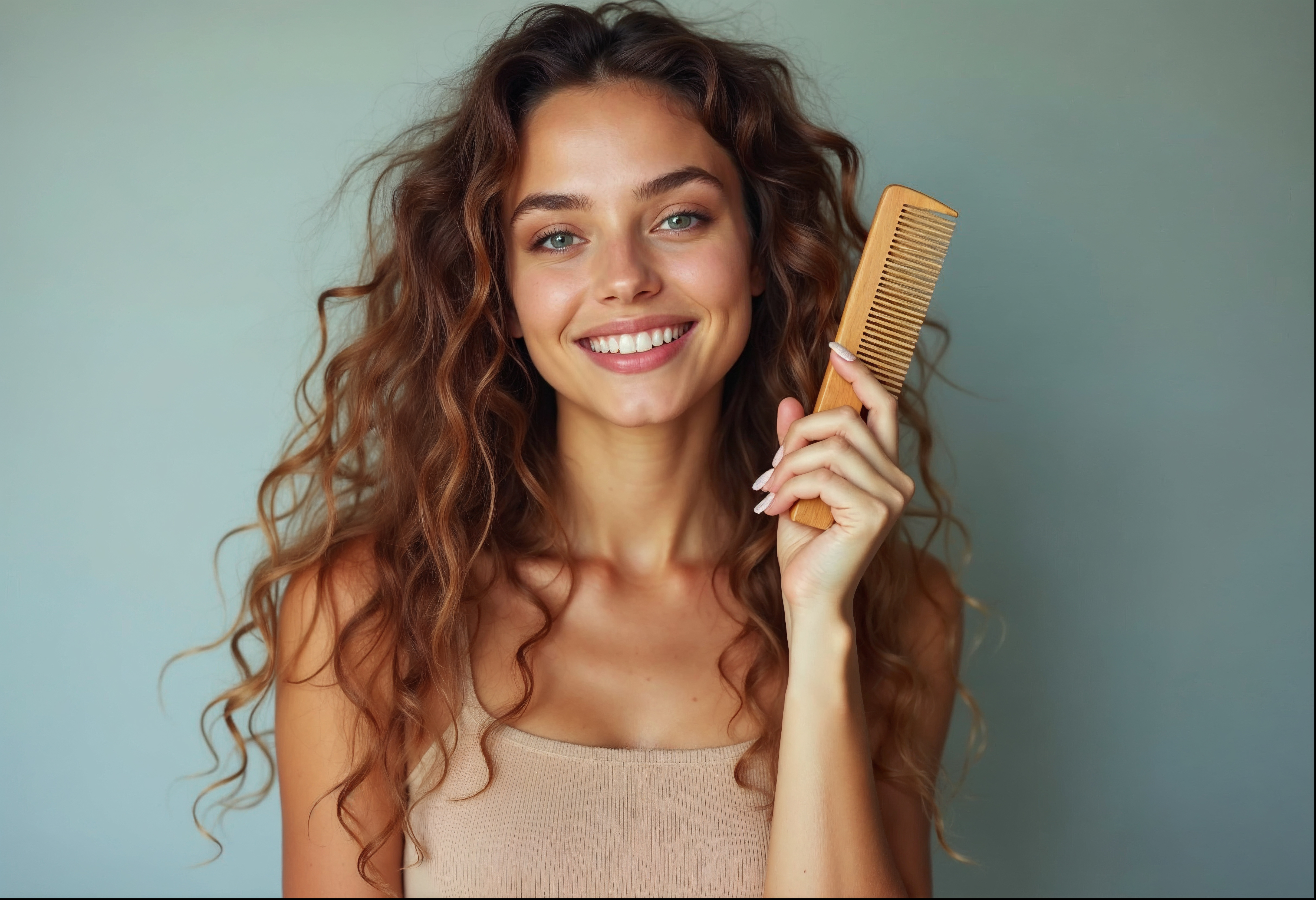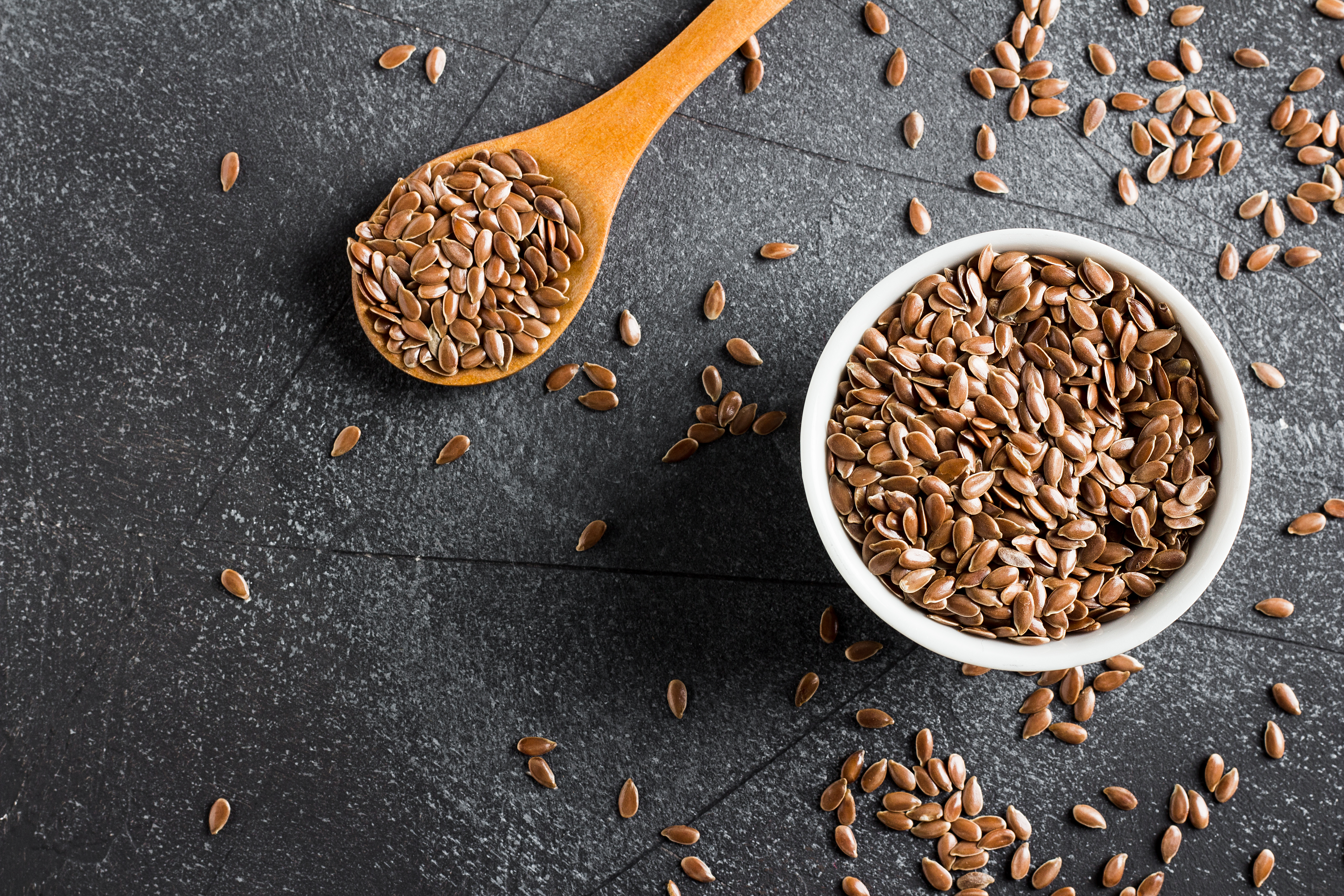Hair damage shows up slowly. Sometimes it starts with a bit of dryness. Sometimes it feels like your hair just won’t grow past a certain point. Everyday stress on your strands, heat tools, chemical treatments, poor diet, and even city air, can wear them down. Before you know it, you’re dealing with breakage, split ends, dullness, or hair fall that doesn’t improve.
You can restore your hair with a proper routine. It doesn’t need to be complicated or expensive. The right habits, done regularly, can bring life back to damaged hair. Let’s go step by step.
Also Read: Hard Water On Damaged Hair
1. Choose a Sulphate-Free Shampoo
Start with how you wash your hair. Most regular shampoos contain sulphates. These create foam but also strip away natural oils. For damaged hair, this makes things worse. Switch to a sulphate-free shampoo with moisturising ingredients like aloe vera, coconut milk, or shea butter. These cleanse without drying. Washing your hair only when needed, usually two to three times a week is enough. This gives your scalp time to produce its natural oils, which help protect your hair.
2. Never Skip Conditioner
Damaged hair needs extra moisture. The conditioner helps seal the outer layer of each strand, which is often rough or raised due to damage. Use a conditioner that targets repair. Look for protein-rich formulas with keratin, wheat protein, or silk extracts. Apply it from the mid-lengths to the ends, not the scalp. Leave it on for a few minutes, then rinse with cool water to smooth the cuticle. This step makes hair easier to manage and less prone to tangles.
3. Add a Hair Mask Once a Week
Daily conditioners help with surface smoothness. A hair mask goes deeper. It feeds your hair with more moisture and nutrients. Choose a mask that’s designed for damaged or over-treated hair. Ingredients like banana, yoghurt, honey, and oils like castor or avocado can help. Apply it generously from roots to ends and let it sit for 15 to 20 minutes. Use it weekly to reduce dryness and make hair softer over time.
4. Reduce Heat Styling
Every time you use a straightener or curling iron, you risk damaging your hair further. Even blow drying too often at high heat can cause long-term harm. Let your hair dry naturally as often as possible. When using heat, set your tools below 180°C and always use a heat protection spray. Try styling your hair differently to avoid daily use of heat tools. Over time, this change can protect your hair’s outer layer and help prevent split ends.
5. Swap Out Your Rough Towel
The way you dry your hair matters. Rubbing it with a regular towel causes friction. This leads to breakage and frizz. Instead, use a microfibre towel or a soft cotton T-shirt. Wrap your hair gently and press to remove water. Avoid twisting or rubbing the strands. This small switch can reduce split ends and help your hair dry more evenly.
Also Read: Hair Care Routine For Frizzy Hair
6. Be Careful When Combing Wet Hair
Wet hair is fragile. It stretches more and breaks more easily. Using a brush or fine-tooth comb on wet strands can do real damage. Always use a wide-tooth comb. Start at the end and work up slowly. Don’t rush or pull. This reduces stress on your roots and avoids unnecessary breakage.
7. Use a Leave-In Conditioner or Hair Serum
If your hair is frizzy or dull, a leave-in product can help protect it through the day. Use a small amount of serum or cream, especially if it contains oils like argan or jojoba. These help tame the strands and give a softer look. Apply to damp hair, focusing on the ends. It also adds a light shield against dust, sun, and humidity.
8. Oil Your Hair Twice a Week
Oiling helps bring back some of the nourishment lost to damage. It also boosts circulation if you massage the scalp properly. Pick oils like coconut, almond, or bhringraj. Warm it slightly before applying. Massage into the scalp gently and spread through the lengths. Let it sit for at least an hour before washing off. Do not comb oily hair, it can cause more damage.
9. Trim Your Hair Every 6–8 Weeks
Split ends don’t go away on their own. If left untreated, they move up the strand and damage healthy parts of your hair. Getting a small trim every couple of months helps maintain shape and prevent further breakage. You don’t need to cut much. Even trimming half an inch makes a difference.
10. Eat for Hair Health
No routine works well without internal support. Hair reflects what you eat. Add protein, zinc, iron, and biotin to your meals. You’ll find these in eggs, lentils, leafy greens, seeds, and nuts. Drink enough water. Cut back on junk food and excess sugar. These changes won’t just help your hair, they’ll help your skin and nails too.
Also Read: Hair Care For Seasonal Hair Fall
Conclusion: Repair Takes Time, But It Works
You don’t need a dozen products to fix damaged hair. What you need is patience, consistency, and the right habits. Gentle washing, regular oiling, a clean diet, less heat, and simple care steps go a long way.
Watch how your hair responds. Adjust when needed. Keep going even when the results seem slow. Change doesn’t happen overnight, but with the right routine, your hair can grow stronger, smoother, and easier to manage again.
Related FAQs
1. When Should You Use a Clarifying Shampoo?
Clarifying shampoo works like a reset button for your hair. After a while, oils, styling sprays, sweat, even minerals from the water at home pile up. Hair starts to feel weighed down, greasy, and kind of lifeless. A clarifying wash clears that mess out and brings it back to clean.
That doesn’t mean you use it all the time. It’s stronger than a normal shampoo, so if you use it every wash, you’ll end up stripping away the natural oils your hair actually needs. Once or twice a month is enough for most people. If you swim a lot or use heavy styling products, you might need it more often. Always follow it up with a conditioner so hair doesn’t feel dry and rough.
2. How Can You Reduce Protein Overload in Damaged Hair?
Protein sounds like a good thing for weak hair, but too much leaves it stiff, brittle, and easy to snap. That’s protein overload. If your hair feels like straw instead of bending, that’s the sign. The fix is balance.
First thing, put the protein products away. Skip the keratin masks or protein-rich conditioners for now. Instead, go heavy on moisture. Look for deep conditioners with things like aloe vera, shea butter, or natural oils. Do them once or twice a week to bring back softness. Trim off any ends that keep breaking. Once hair feels normal again, you can bring protein back little by little, but only when it’s actually needed.
3. What Are the Best Protective Styles for Damaged Hair?
Protective styling gives damaged hair a break. It cuts down on brushing, pulling, and constant heat. Simple styles like a loose braid, a bun, or twists, do the trick. Even covering your hair with a silk scarf at night makes a difference.
The idea is to protect without pulling. If a style feels too tight, it’s doing harm instead of good. Pair that with keeping your hair moisturized and swapping cotton pillowcases for satin or silk. That way, you’re not rubbing strands dry while you sleep. Done right, protective styling lets hair rest, repair, and grow stronger.
4. What Is the Ideal Water Temperature for Wash Days?
Water temperature might not seem like a big deal, but it changes how your hair behaves. Very hot water feels nice in the shower, but it opens the cuticle too much, strips oils, and leaves hair frizzed out. Very cold water won’t clean well enough.
The sweet spot is lukewarm. It’s warm enough to get rid of dirt and product, but not harsh on the hair’s natural barrier. To finish, do a cool rinse. That seals the cuticle, locks in moisture, and gives hair a smoother, shinier look.
5. How Does Scalp Health Affect Repairing Damaged Hair?
Healthy hair starts with a healthy scalp. If the scalp is clogged with buildup or it’s irritated and flaky, hair struggles to grow strong. Damage just keeps repeating. That’s why fixing the scalp is part of repairing the strands.
Use a gentle scrub or clarifying wash now and then to clear buildup. Massaging the scalp helps too, it boosts blood flow and sends nutrients to the roots. Oils or serums with vitamins can calm irritation and keep the skin balanced. When the scalp is clean and cared for, new hair grows stronger, and damaged strands have a better chance to heal.



